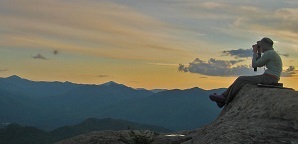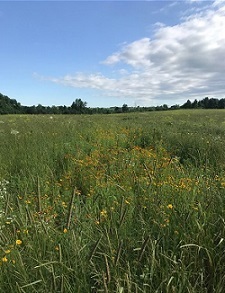Wildlife, Fish, and Marine Life Newsletter
The New York State Department of Environmental Conservation sent this bulletin on 06/05/2023 12:37 PM EDT |
| DEC Delivers - Information to keep you connected and informed from the NYS Department of Environmental Conservation |
| View in browser |
Wildlife, Fish & Marine Life Newsletter |
Help Monitor Alpine Birds in the Catskills and Adirondacks
Calling all aspiring birders, hikers, and citizen scientists! The field season for Mountain Birdwatch is underway for the month of June and we'd love your help. This project, headed up by Jason Hill with Vermont Center for Ecostudies, is carried out on mountaintops across the northeast and involves point count surveys for 10 target alpine bird species. DEC uses the data obtained from this project to monitor these populations in New York. With this data, we can see how these species are reacting to human impacts, such as habitat loss and climate change. This is a volunteer-based survey effort, and there are still several New York routes remaining to be picked up for this year's surveys. Anyone can participate—no prior birding experience is necessary, and all survey and training materials needed are available on the website. If you have an interest in participating, please consider covering one of these remaining routes this season. All the information you need to complete the survey is available on the website, but feel free to email Jason Hill for questions. Photo courtesy of Vermont Center for Ecostudies. DEC Releases Draft Access and Public Use Plan for Collins Landing and Point Peninsula Wildlife Management Areas
Draft Access and Public Use Plans for Collins Landing and Point Peninsula Wildlife Management Areas (WMAs) are available for public comment. The draft Access and Public Use Plans’ objectives include maintaining existing features, such as roads, kiosks, and parking areas. The draft plans are located at the top of each property’s webpage, linked below. Collins Landing WMA contains 51 acres of primarily older growth forests and emergent marsh wetlands in Jefferson County adjacent to the St. Lawrence River. The wetlands associated with the WMA and river are important nesting and resting areas for migratory waterfowl, osprey, bald eagle, northern pike, and muskellunge. Point Peninsula WMA contains 1,086 acres of primarily grasslands, and a natural wetland complex consisting of emergent marsh, shrub/scrub swamp, and floodplain forest in Jefferson County, abutting Lake Ontario. The grasslands on the WMA make up the Point Peninsula Bird Conservation Area, which is also part of an Important Bird Area of New York and Grassland Bird Focal Area. The public is invited to provide comments on the Collins Landing and Point Peninsula draft APUPs until July 1, 2023. Comments can be sent to NYSDEC Bureau of Wildlife, Region 6, 317 Washington Street, 7th Floor, Watertown, NY, 13601 or by email with the subject line – Collins Landing WMA draft APUP for Collins Landing WMA and Point Peninsula WMA draft APUP for Point Peninsula WMA. Photo of grassland at Point Peninsula WMA. Living With Wildlife
Being able to observe wildlife close to home is a treasured experience for many people, but sometimes wildlife can get too close or even cause property damage. Woodchucks in the garden, squirrels or other critters in the attic, bears rummaging through garbage and tearing down bird feeders, and skunks under the shed are but a few of the problems people may encounter. There are steps you can take to enjoy wildlife from a distance and reduce the chance that conflicts occur:
Photo by Terry Schirmer. |



